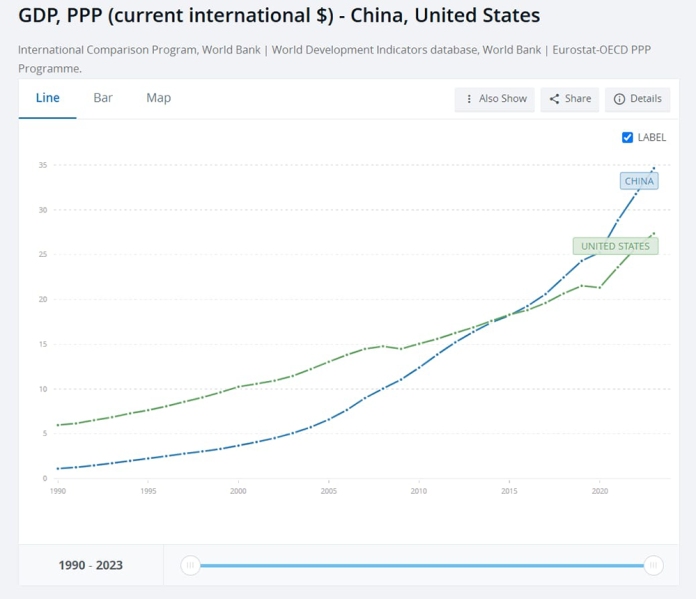Measured at PPP, the latest IMF data shows China’s GDP exceeded that in the US in 2016, and is around 20% bigger.
On May 30, the World Bank released Purchasing Power Parities (PPPs) and the Size of World Economies—Results from the 2021 International Comparison Program(ICP).
Compared with the ICP 2017, the participating developing economies saw an obvious rise in their status in the global economic landscape. For example, in 2021, among the top 10 economies, the economic scales of developing economies accounted for 34.6% of the global economy, compared to 31.7% in 2017. As to major economies, the economic size of India and Russia surpassed Japan and Germany respectively, ranking 3th and 4th in the world, that of Brazil surpassed France, ranking 7th in the world. These changes also show that developing economies have remained a main driver of global economic growth in recent years.
As to China, China’s PPP in 2021 was 3.99, and the PPP-based GDP reached $28.82 trillion, which was 61.8% higher than the market exchange rate-based GDP of that year. Among other major developing economies, India rose by 257%, Russia by 211%, Indonesia by 198%, and Brazil by 127%. As to the share of the world economy, China’s PPP-based GDP accounted for 18.9% of the global total, and market exchange rate-based GDP 18.5%, with a difference less than 0.5 percentage points. This shows that in the 2021 cycle, the share of China’s PPP-based GDP increased, and China maintained a steady position in the world economy, making positive contribution to the world’s economy.


